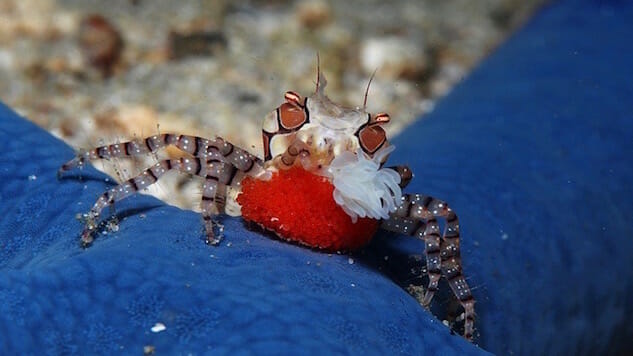Weird Science: 5,000-year-old Beer and Becoming an Internet Troll

This Week in Science: Stanford archaeologists brew a 5,000-year-old beer recipe and find that it tastes better than Natty Light. Researchers out of Stanford and Cornell seek to uncover the psyche of the “Internet Troll.” It turns out it’s living inside all of us. And, finally, science figures out why sea anemones and crabs get along so well. It’s mostly has to deal with sex.
![]()
Scientists test a 5,000-year-old Chinese beer recipe: It tastes fruity.
Whatever booze the Chinese were drinking 5,000-years-ago, it tasted fruity, cider-like, and probably significantly better than the Snow they drink today, as revealed in an experiment conducted by students at Stanford University.
In May 2016, Stanford archaeology professor Li Liu and her students uncovered an ancient piece of pottery that contained the ingredients of a 5,000-year-old Chinese beer recipe. Nine months later, that same professor and her students brewed the ancient Chinese bevvy, recreating the world’s oldest known alcoholic beverage and gaining insight into how the Chinese dined—and got schwasted.
What exactly was the ancient Chinese process?
The students, using either barley, wheat or millet seeds, covered the grain with water and allowed it to sprout. After the grain sprouted, the seeds were then crushed and mixed with water, which was then heated to 149-degrees Fahrenheit for an hour. Following the brief incubation, the students let the beer ferment for a week—get it all nice and alcoholic.
What resulted was a surprisingly fruity beer that tasted like citrus, according to undergraduate student Madeleine Ota.
“Archaeology is not just about reading books and analyzing artifacts,” said professor Liu. She’s right, it’s apparently also about partying like it’s 2983 B.C.
![]()
Literally ANYONE can become an Internet troll, in a SHOCKING new study.
-

-

-

-

-

-

-

-

-

-

-

-

-

-

-

-

-

-

-

-

-

-

-

-

-

-

-

-

-

-

-

-

-

-

-

-

-

-

-

-








































